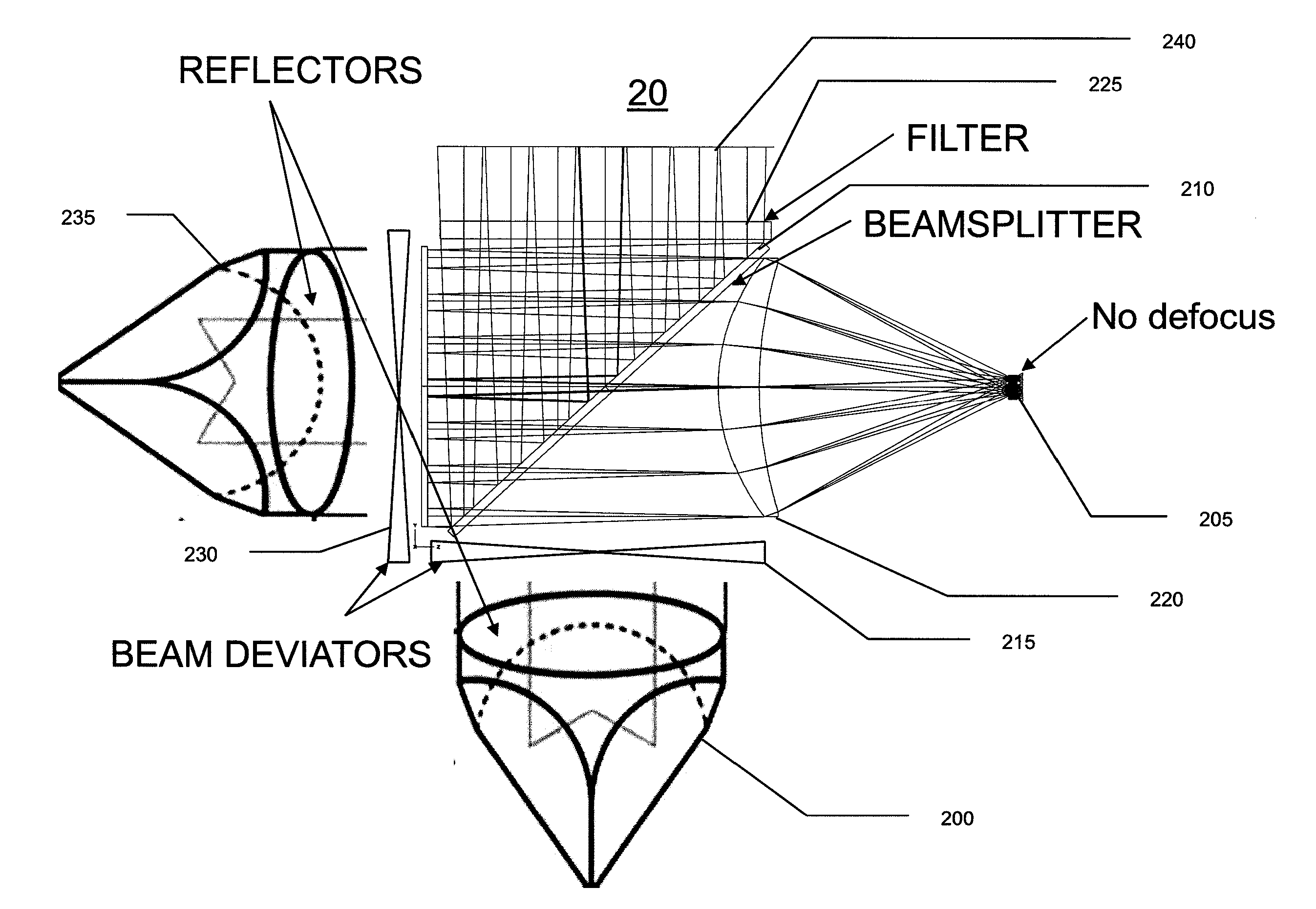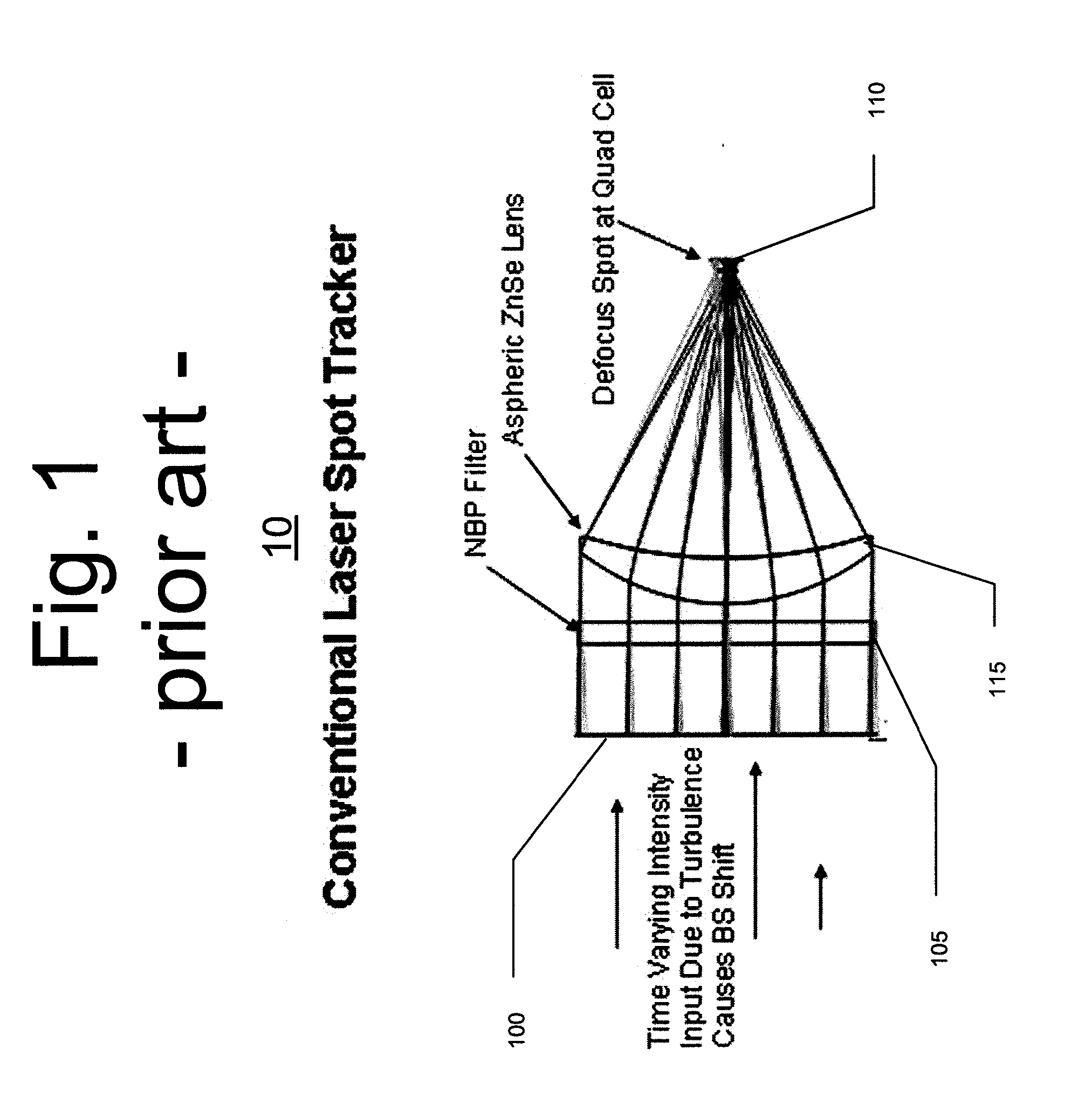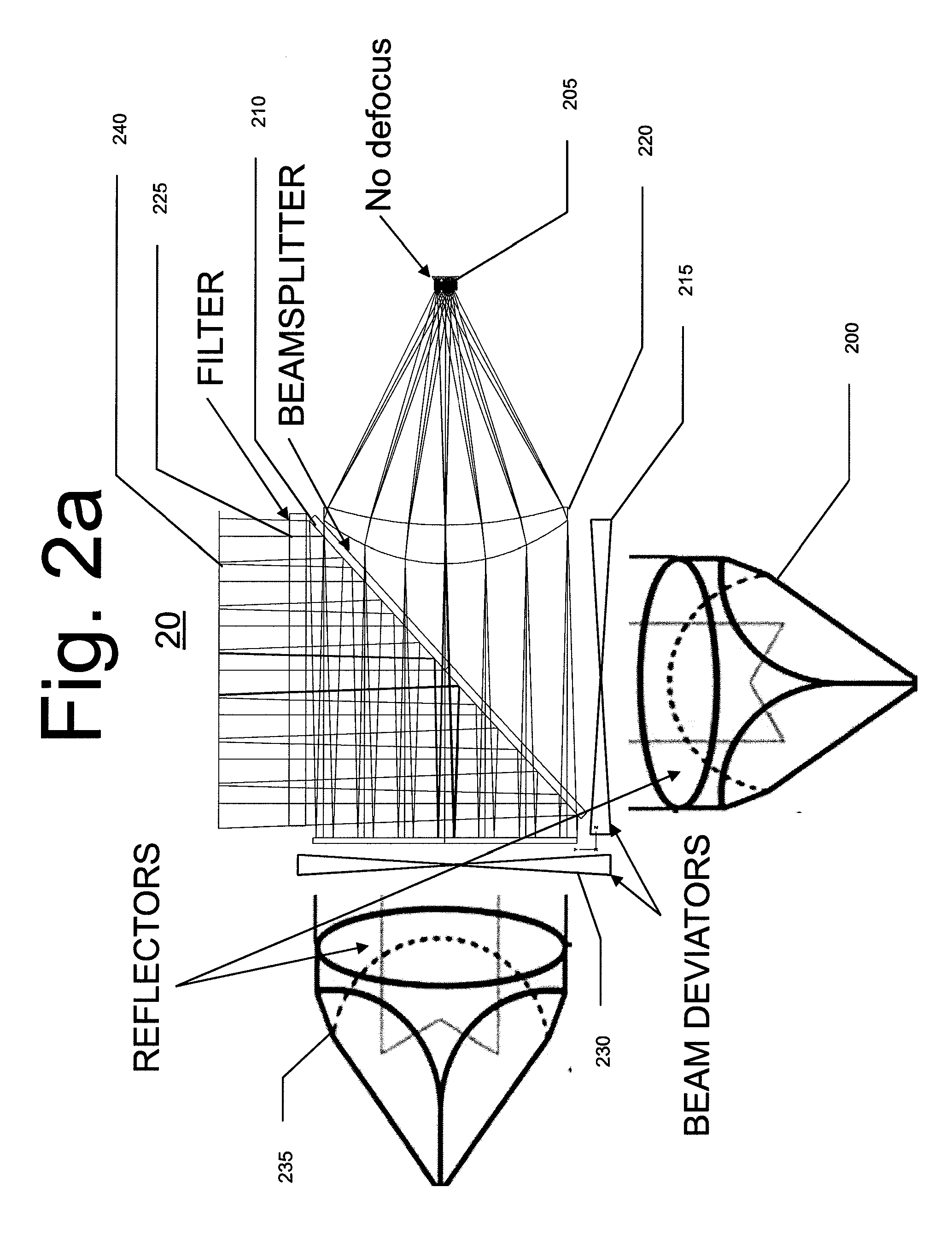Optical arrangement for tracking detector
a tracking detector and optical arrangement technology, applied in the direction of optical radiation measurement, instruments for comonautical navigation, instruments, etc., can solve the problem of exacerbated detection errors related to light level variations at the sensor apertur
- Summary
- Abstract
- Description
- Claims
- Application Information
AI Technical Summary
Benefits of technology
Problems solved by technology
Method used
Image
Examples
Embodiment Construction
[0022]The present invention comprises a method and apparatus for the reduction and mitigation of detection errors and inaccuracies in a laser tracking detection system caused by turbulence and other atmospheric conditions.
[0023]In a conventional laser spot tracker as shown in FIG. 1, incoming radiation is admitted through an aperture 100 at the front of the tracker 10. The radiation then passes through a narrow band-pass (NBP) filter 105 that removes all but the desired wavebands of laser radiation. The filtered radiation is then focused with a lens 115 onto an intermediate focal plane. The quad-cell detector 110 is located behind the best optical focus so that the defocused image blur fills most of the quad cell array. The effect of this de-focus is to spread the laser spot image across the array to improve detector sensitivity, thereby allowing for more accurate gimbal servo pointing and therefore improved laser spot tracking. An undesirable side-effect of this de-focus, however, ...
PUM
 Login to View More
Login to View More Abstract
Description
Claims
Application Information
 Login to View More
Login to View More - R&D
- Intellectual Property
- Life Sciences
- Materials
- Tech Scout
- Unparalleled Data Quality
- Higher Quality Content
- 60% Fewer Hallucinations
Browse by: Latest US Patents, China's latest patents, Technical Efficacy Thesaurus, Application Domain, Technology Topic, Popular Technical Reports.
© 2025 PatSnap. All rights reserved.Legal|Privacy policy|Modern Slavery Act Transparency Statement|Sitemap|About US| Contact US: help@patsnap.com



